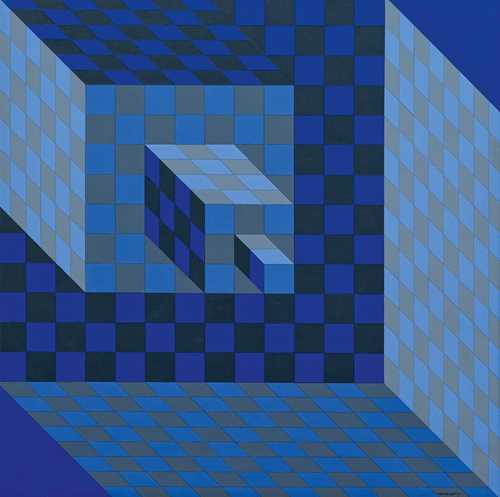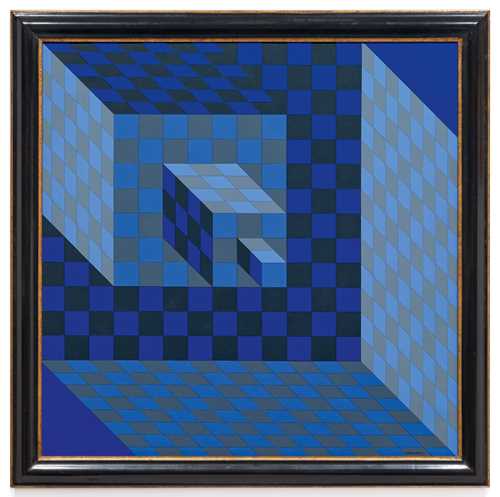
Lot 3421 - A203 PostWar & Contemporary - jeudi, 01. décembre 2022, 14h00
VICTOR VASARELY
The authenticity of this work has been confirmed by Pierre Vasarely, Fondation Vasarely, Aix-en-Provence, October 2022. We thank Pierre Vasarely for his kind assistance. This work will be included in the forthcoming Catalogue raisonné de l’oeuvre peint de Victor Vasarely.
Provenance:
- Semiha Huber, Zurich (verso with the label).
- Private collection Switzerland.
“Every form is a base for colour, every colour is the attribute of a form.” Victor Vasarely
As one of the founding fathers of the Op Art movement in Europe, Vasarely, with his brightly coloured optical patterns, brought a visually kinetic aspect to the traditionally flat paintings of his generation. Vasarely originally wanted to become a doctor but gave up medicine to follow his passion for art and enrolled at Sandor Bortnyik's private art school Műhely from 1929, which was inspired by the ideas of the Bauhaus. Due to financial constraints, the school focused on subjects such as applied graphics and typographic design, which later formed the basis for Vasarely's unmistakable style. Vasarely mastered the game of optical illusions like no other, expertly bringing simple geometric forms, vibrations, rotations, and oscillations to the canvas.
In the present work also, he skilfully puts the viewer's eye to the test. As a template for later wooden sculptures, Vasarely demonstrates his ability to manipulate colour, light and geometry: in simple shades of blue and grey against a dark blue background, several cubes come into view. Inconclusiveness meets visual sensory overload here, for despite the accurate structure and demarcation of the individual surfaces, it is hard to make out the orientation of the largest cube. Is it a room into which the viewer is plunged, and do the lighter and darker surfaces on the right represent walls? Or is the artist projecting a floating cube onto the centre of the canvas? What is the role of the colours and the smaller cubes in the very centre of ''Felhoe''?
Vasarely's work is not only complex, but also often contradictory. Simultaneously, it bridges the gap between the abysses of the first half of the 20th century and the rise of mass consumption and the Swinging Sixties. “Felhoe” exists not only as a complex pictorial surface, but as a space designed by the artist that is both dynamically inviting and problematic in its effect. As unstable and fleeting as Vasarely's pictorial surfaces may seem, by eliciting fascination and discomfort, the artist brilliantly succeeds in holding up a mirror to the viewer.
CHF 60 000 / 90 000 | (€ 61 860 / 92 780)
Vendu pour CHF 110 100 (frais inclus)
Aucune responsabilité n'est prise quant à l´exactitude de ces informations.


